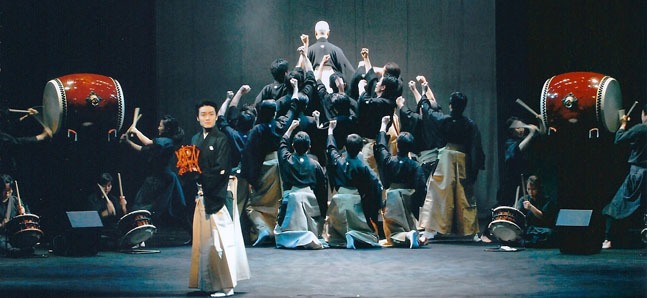
Photo by Akira Iwata
Posted: Thu Aug 12 2010
There are over 200 schools of nihon buyo (classical Japanese dance), and each school has many professional dancers active within it. Amongst them, the one working on the most interesting performances, and the one who is seen as the classical dance world’s greatest hope, is the Onoe-ryu dancer Seifu Onoe. He has been dancing since the age of two, studying under the instruction of his father, the Second Onoe Kikunojo, who is the third head of the Onoe-ryu school. Of course, he also performs in kabuki and Noh theatre, but he has also moved outside the frame of the traditional arts to collaborate in modern plays and Takarazuka (all-female musical theatre), as well as with many contemporary musicians.
As part of his ‘Daisankai Onoe Seifu Nihon-buyo Koen’, at the National Theatre in January, Seifu unveiled a new work: ‘Tsuyu Shogun Nobunaga’. It was hailed as a new departure for Japanese dance, and you could even say that the amount of attention it garnered was unprecedented for a nihon buyo work. It’s a sad fact that there are very few present day opportunities for nihon buyo to be publically appreciated along the lines of other popular forms, like musicals. Despite that, Onoe has managed to achieve public recognition, and Time Out Tokyo spoke with him about Onoe-ryu dance, as well as his own approach to his art.
‘Onoe-ryu is a school of nihon buyo which was established by the Sixth Onoe Kikugoro, and he was succeeded by his pupil – my grandfather – who became the second head of the school. So, while the Onoe house dates back to the Edo period in terms of kabuki, as a school of classical Japanese dance, we only have a history of around 60 years. In our world, the Sixth Onoe Kikugoro is called kami-sama (God). If it were soccer, he’d be like Pelé. He was an actor with an absolute charisma, and it wouldn’t be exaggerating to say that there isn’t a kabuki performer who hasn’t been influenced by the Sixth Kikugoro. He is that kind of a figure. The Sixth Kikugoro started many new things. Even in dance, in terms of new kinds of staging and making small changes to older elements, he created his own world. Perhaps he wanted to leave his way of living behind as a school of dance. My grandfather was able to take on the name Kikunojo, and the Onoe-ryu school of Japanese classical dance was established. Our motto is to always be fresh and new, and to always have grace. In terms of a characteristic you can recognise when you watch us dance, we want to dance in a stylish way,’ says Onoe of the history of his family and its art.
To describe what Onoe’s sense of a ‘stylish’ way of dancing is, perhaps the words ‘lucid’ and ‘smart’ apply. In more modern terms, to say it’s ‘cool’ would translate well, too. This kind of expression coming from the member of a school of classical dance is fresh and new in itself.
Perhaps it’s because Onoe brings his sensibilities as a modern individual to nihon buyo as if it’s completely ordinary. This is why the new work created by him has the stylish impact of contemporary group dance. There is a belief that classical Japanese dance shouldn’t have the unison of ballet, that the sense of individuality produced by each dancer having different movements is something to be valued. But that is where Onoe, thinking of the balance of the entire group, can choreograph perfectly. When you watch a large group of Onoe-ryu dancers all moving in exactly the same manner, there is no mistaking its crisp stylishness. Even though they are works of the traditional art of nihon buyo, in terms of technique, Onoe’s performances give you the feeling that you are witnessing the birth of a new kind of dance.
But while Onoe tackles aspects of the very new on one hand, on the other he also puts serious effort into honing his skills in the classical Japanese performing arts. He also places a lot of importance on productions with other choreographers and kabuki actors of his generation, and on finding how they can work together to further improve their arts. The results of this hard work will be seen at ‘Daisankai Shukou no Hana’, on August 14 at the Nihonbashi Gekijyo theatre. Starting with Seifu Onoe, it will feature many of the young stars of the kabuki world, including Kanjuro Fujima, Somegoro Ichikawa and Kotaro Kataoka. Many of these actors will only perform on the shamisen (a stringed instrument similar to a banjo) or the tsuzumi drum, or will devote themselves solely to singling traditional nagauta songs. Actors who usually take centre stage in leading roles will apply themselves to these musical performances, and Onoe – who is the most skilled dancer of all – will dedicate himself to the tsuzumi. There is, of course, a greater meaning to this program.
Kabuki encompasses many different art forms. Kabuki actors can play the shamisen and sing nagauta. It’s as if an opera singer could also dance in a ballet or pick up an instrument and join an orchestra, but it’s a matter of course in the world of the classical Japanese performing arts. Each individual classical dancer or kabuki performer has devoted many hours day and night to the study of traditional performance arts, even when it’s in a field outside the one they specialise in, but there aren’t many opportunities to perform those arts for an audience. The one place where you can witness these performances is the ‘Shuko no Hana’ productions.
Onoe remarks, ‘I like musical instruments like the tsuzumi. The head of the Fujima-ryu school of dance, Kanjuro Fujima – who is collaborating to produce this event – loves the shamisen. We both had the thought that we’d practiced these arts so intensely – to the level of professionals in those fields – and that there really should be a forum for us to perform them seriously on the stage, that we simply wanted to perform them, and that was the beginnings of ‘Shuko no Hana’. It’s an excellent learning experience for young performers, and allows us an opportunity to see dance and theatre from many different perspectives. So even Somegoro Ichikawa won’t be acting, but giving a musical performance.’
Nihon buyo dates back to the Edo Period, when the choreographers who directed the dance in kabuki performances each created their own schools and further developed the art form. But amongst them, Onoe-ryu is one of the greatest in modern kabuki history, and as a school which flows from the teachings of its forefather and restorer Onoe Kikugoro, its links to the world of kabuki are powerful ones. Onoe has said that at the origins of his own approach to his gei (art) is his coming into contact with the kabuki actors who are active today.
‘Actually, until the later years of primary school I didn’t have much motivation (towards the traditional performing arts). There was a time when I didn’t practice the dance or shamisen particularly seriously at all. When I was in Junior High I started to meet children from kabuki families who were the same generation as me, like Somegoro Ichikawa and Shoroku Onoe. They were throwing themselves completely into kabuki performances for twenty five days straight. But I was from a nihon buyo family and I wasn’t in the kind of environment like kabuki where I would have to appear on stage day after day. When I saw those people who were young like me, but were taking on their role in the theatre so seriously, I thought, “It really wouldn’t be a good idea to go along just as I have been.”
‘I thought, “I can’t allow myself to be bettered by them in my own specialist field of dance. I got the feeling that if I didn’t bring my own art and attitude up to the same level as theirs, I couldn’t associate with them as equals. Since I was little, I was rather a poor student. So there is a sense that my attitude started from that part inside of me which said, “cover up the negatives”. I’d been blessed with such a wonderful environment around me, I realized it would be a terrible shame to end things as just mediocre, and it would be a waste. So I thought, “I have to surpass the others,” and since then I’ve worked thinking, “I mustn’t lose, I mustn’t lose.”
‘Whether it’s good or bad, nihon buyo is a minor art form here. People from other countries have far more interest in traditional Japanese things. I have the feeling that Japanese people think they know about it, whether it’s kabuki or nihon buyo, just because it’s something that is from their own country. When I was a student I thought I knew classical Japanese dance because I was born into a family of it. But we don’t actually know anything. When I was small, because I was so pale, people used to say that I would suit onnagata (the role of a woman) and that I was sweet, and I really, really couldn’t stand it. But when I started to seriously tackle those dances, I began to think that perhaps playing onnagata is quite enjoyable. I came to think that as one of the defined styles, maybe playing a female role could be interesting. I was a human being like any other ordinary modern kid, and if I could think it was interesting, I thought that maybe it’s possible for other people to find it interesting too. So I think I need to bring myself up to a high level so that when there is an opportunity for ordinary people to experience dance, through whatever reason, I can show them something that they will really be drawn to,’ muses Onoe.
The traditional performing art of kabuki was established foremost as an entertainment industry, and as a result has enjoyed lasting popularity. Perhaps because Onoe was brought up in a family devoted to classical dance – which is so closely related to this world of kabuki – he has so desired the ‘here’ and ‘now’, and has been daring enough to try to appeal to a much broader audience. Perhaps that is the source of his particularly original ‘cool nihon buyo’ style.
In the near future, he is also set to perform with Kamejiro Ichikawa, a young kabuki actor with a similarly impressively individual style. Through continuing collaborations, and competition, with brilliant artists like these, Onoe is aiming to bring the level of all their performances to an even higher level. On October 17 he will collaborate with Noh kyogen comedic performer Ippei Shigeyama in ‘Itsuseikai’ at the Cerulean Tower Noh theatre in Tokyo. What kind of passion and thought is he pouring into this original production?
‘Recently there has been quite a lot of collaborative work in the traditional performing arts. But true collaborations, where both sides truly face each other head-on, like a battle, are pretty difficult. I myself have participated in countless collaborations but I never really came across any true engagement, where we could achieve any real resonance on the stage. Going through experiences like that, and also in terms of my age now, I got to the point where I thought I wanted to do something that takes that further step. So what I was thinking was that I wanted to create a show where a kyogen comedian and a nihon buyo dancer could appear on stage together as if it’s a common thing and perform a piece without it seeming strange at all.
‘Kyogen is something where the people watching can laugh and enjoy themselves. So if I was going to name a target audience, I’d say young people; even if you have little knowledge of the classics, I think it’s a performing art you can still enjoy. I want to keep on doing performances that are universal, that anyone watching will think, “Wow, that’s cool!”, but on the other hand, I also want to do productions for people who want a deeper knowledge. I’d like to keep on working on both sides.’
With each production, our impression of Onoe completely changes. It’s as if sometimes he is a musician, and sometimes a kabuki actor. Ultimately, what is at his core is nihon buyo. Perhaps it’s because he has that unwavering core that he is able to jump into different artistic spheres as he desires. He is able to create a harmony between his own artistic worldview and that of those in other fields without any sense of incongruity, and he can communicate this to his audience. At the same time, Onoe never forgets the feeling of being that ordinary boy with little interest in the classics, who gradually came to understand their appeal. Perhaps that is his attraction for us, why he makes us want to go and see his performances as a modern, rather than classical, artist, who is creating a new brand of stylish, cool nihon buyo.
‘Daisankai Shuko no Hana’
Date: Sat Aug 14
Location: Nihonbashi Gekijyo Theatre
Time: Matinee: 12noon curtain/Evening: 4.30pm curtain
Performers: Seifu Onoe, Kanjuro Fujima, Gensho Umewaka, Kotaro Kataoka, Somegoro Ichikawa
Ticket inquiry: Onoe-ryu Office (03)3541 6344
‘Daihachikai Kamejiro no Kai’
Date: Tue Aug 24-Fri Aug 27
Location: Kyoto Geijyutsu Gekijyo Shunjyu-za
Performers: Kamejiro Ichikawa, Seifu Onoe
Ticket inquiry: Kyoto Geijyutsu Gekijyo Ticket Centre (075)791 8240
‘Daigokai Kikujyukai’
Date: Mon Sept 27
Location: National Theatre, small theatre
Performers: Kikunojo Onoe, Seifu Onoe
Ticket inquiry: Onoe-ryu Office (03)3541 6344
‘Isseikai’
Date: Sun Oct 17
Location: Tokyo Cerulean Tower Noh-gakudo
Performers: Seifu Onoe, Ippei Shigeyama, Shime Shigeyama, Kikushiro Onoe
Ticket inquiry: Onoe-ryu Office (03)3541 6344
Website: onoe-ryu.com/
Tweets
- About Us |
- Work for Time Out |
- Send us info |
- Advertising |
- Mobile edition |
- Terms & Conditions |
- Privacy policy |
- Contact Us
Copyright © 2014 Time Out Tokyo










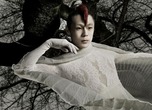
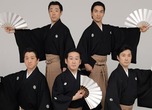
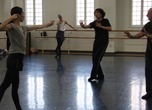
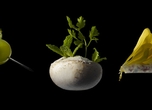
Add your comment